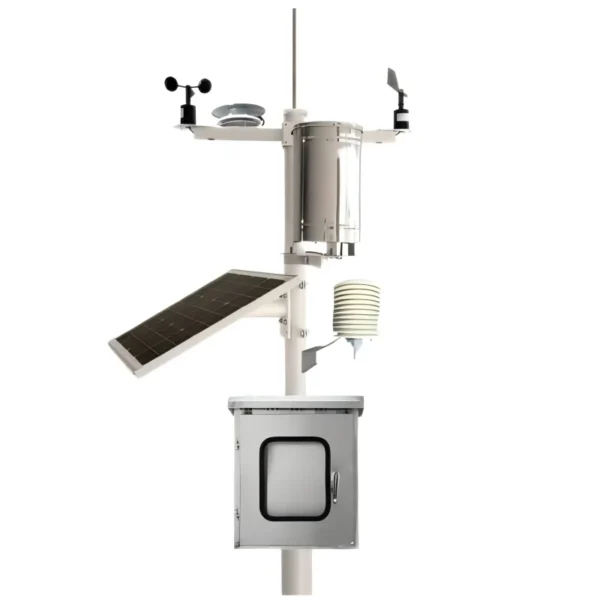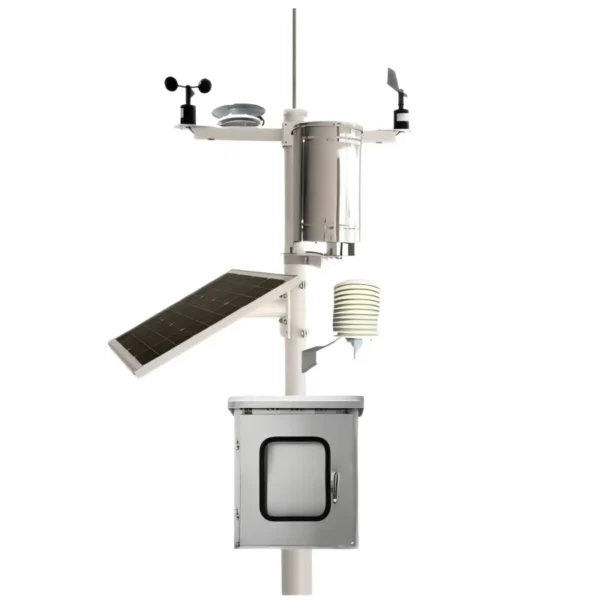
# Automatic Weather Station: Advancements and Applications in Modern Meteorology
Automatic Weather Stations (AWS) have revolutionized the way we collect and analyze meteorological data. These sophisticated systems are designed to measure various atmospheric parameters automatically, providing real-time data that is crucial for weather forecasting, climate research, and environmental monitoring.
## What is an Automatic Weather Station?
An Automatic Weather Station is a standalone system that records and transmits weather data without human intervention. Typically, an AWS includes sensors for measuring temperature, humidity, wind speed and direction, atmospheric pressure, precipitation, and solar radiation. The data collected by these sensors is processed and transmitted to a central database or directly to users via various communication channels.
### Key Components of an AWS
– Sensors: These are the primary components that measure different weather parameters. Common sensors include thermometers, hygrometers, anemometers, barometers, rain gauges, and pyranometers.
– Data Logger: This device records the data collected by the sensors. It often includes storage capabilities and can transmit data to remote locations.
– Power Supply: AWS systems are usually powered by solar panels, batteries, or a combination of both to ensure continuous operation.
– Communication Module: This component facilitates the transmission of data to central servers or users. Common communication methods include GSM, satellite, and radio frequencies.
## Advancements in AWS Technology
Recent advancements in AWS technology have significantly enhanced their capabilities and reliability. Some of the notable improvements include:
– Miniaturization: Modern AWS systems are more compact and portable, making them easier to deploy in remote or challenging environments.
– Enhanced Accuracy: Advances in sensor technology have led to more precise measurements, improving the overall quality of the data collected.
– Energy Efficiency: Improved power management systems and the use of renewable energy sources have extended the operational life of AWS units.
– Data Integration: AWS systems can now integrate with other meteorological tools and platforms, allowing for more comprehensive data analysis and visualization.
## Applications of Automatic Weather Stations
AWS systems are utilized in a wide range of applications, each benefiting from the real-time and accurate data they provide. Some of the key applications include:
### Weather Forecasting
AWS data is crucial for accurate weather forecasting. Meteorologists use the real-time data to predict weather patterns, issue warnings, and provide forecasts that help in planning and decision-making.
### Climate Research
Long-term data collected by AWS systems is invaluable for climate research. Scientists use this data to study climate trends, assess the impact of climate change, and develop models to predict future climate scenarios.
### Agriculture
Farmers rely on AWS data to make informed decisions about planting, irrigation, and harvesting. Accurate weather information helps optimize crop yields and reduce the risk of weather-related losses.
### Disaster Management
AWS systems play a critical role in disaster management by providing early warnings for severe weather events such as hurricanes, floods, and droughts. This information is vital for emergency preparedness and response efforts.
### Aviation
In the aviation industry, AWS data is used to ensure the safety and efficiency of flights. Accurate weather information helps pilots and air traffic controllers make informed decisions, reducing the risk of weather-related incidents.
## Conclusion
Automatic Weather Stations have become indispensable tools in modern meteorology. Their ability to provide real-time, accurate, and reliable weather data has transformed various fields, from weather forecasting to agriculture and disaster management. As technology continues to advance, AWS systems will undoubtedly play an even more significant role in our understanding and management of the Earth’s atmosphere.
Keyword: automatic weather station
